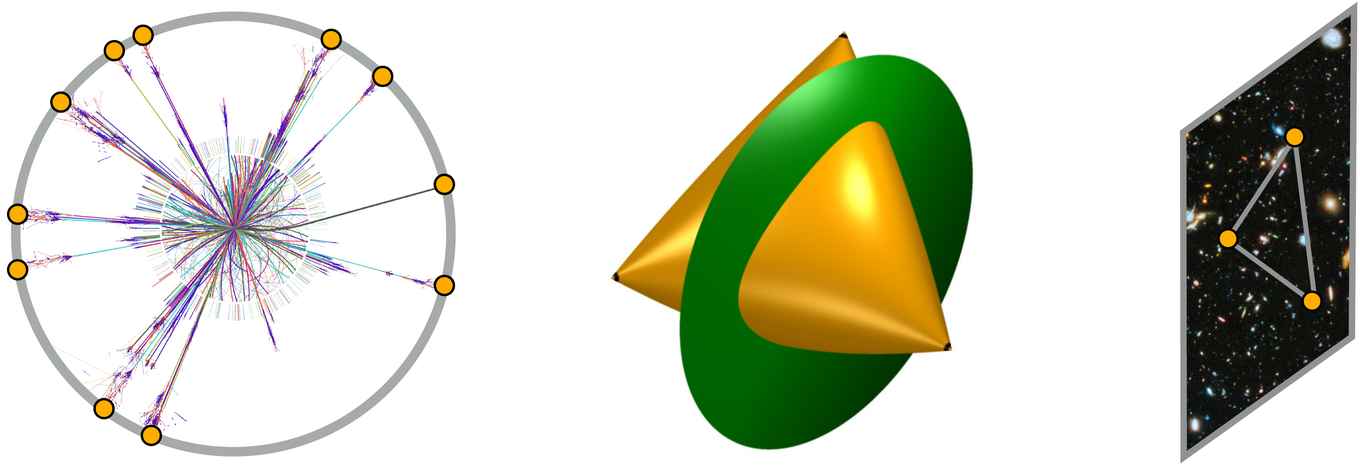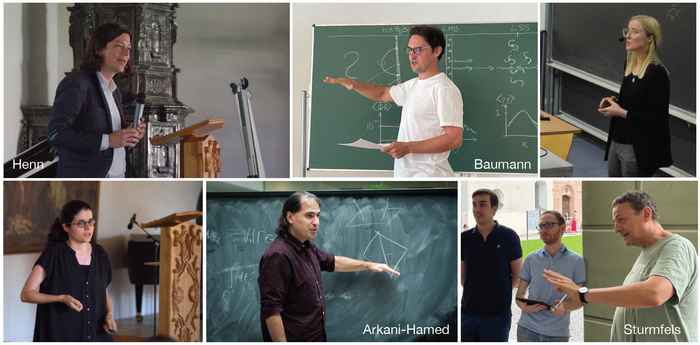ERC Synergy grant for project UNIVERSE+: geometry in particle physics and cosmology
26 October 2023

Hidden Geometry of Physical Laws
Spacetime and quantum mechanics lie at the heart of physics, and have led to a spectacularly successful understanding of the laws of Nature. However, these pillars of fundamental physics are expected to be only approximate notions that ultimately must arise from more basic concepts. This is seen most dramatically at the Big Bang singularity, where the notion of a smooth spacetime breaks down.
Recently, novel geometric shapes called “positive geometries” were discovered in the data describing the scattering of elementary particles and the correlated positions of cosmological structures on the sky. “We believe that these positive geometries have caught the tiger by the tail,” says Nima Arkani-Hamed, “giving us the first concrete examples of the way in which the principles of spacetime and quantum mechanics can arise from more basic mathematical principles.” So far, however, these positive geometries have only been found in simplified toy models of the physical world. The aim of the UNIVERSE+ Collaboration is to fully understand and expose these new ideas, and to find the geometries relevant to the real world, including gravity and the expanding universe.
These developments in physics are closely tied to significant advances in mathematics. “Positive geometries are fascinating objects in their own right, independent of the physical settings in which they were discovered,” says Bernd Sturmfels. “I believe that Positive Geometry has a very bright future with great potential to become a vibrant new field at the interface of physics and mathematics. To achieve this requires a coordinated effort by physicists and mathematicians in the years to come, which has now received a significant boost by the ERC Synergy Grant for the UNIVERSE+ Collaboration.”
The Team
The Principal Investigators of UNIVERSE+ bring together complementary expertise in particle physics, cosmology and mathematics. This is the first collaboration of its kind, made possible by a recent confluence of critical insights in both mathematics and physics. The group aims to attract some of the brightest young people from diverse backgrounds to work on a multi-faceted research program with the potential for significant impact on a wide range of scientific topics in particle physics, cosmology and outward-looking mathematics. They will soon be advertising positions for researchers to join the team.

About ERC Synergy Grants
The ERC Synergy Grants fund collaborative projects that, due to their complexity, are carried out by several scientists and their groups, in order to achieve breakthroughs that would not be possible in individual projects. For this purpose, the ERC allocates grants of up to 10 million euros for a period of six years.